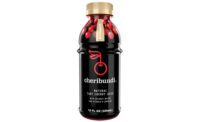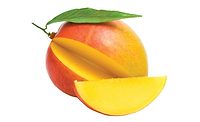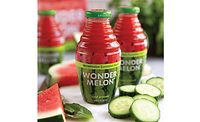Cultivated as a spice since ancient times, ginger has become well-known for its medicinal health benefits and ability to boost bone health, strengthen the immune system and aid in digestion, according to experts. Derived from the root of the ginger plant Zingiber officinale, ginger can be consumed fresh, powdered, dried, in oil form or as a juice, giving the science-backed ingredient added versatility to impact consumers’ bodies and brains, experts say.
The health-and-wellness movement and consumer demand for clean-label functional beverages is driving usage for the spicy, zesty taste of ginger in functional beverages, says Holly McHugh, marketing associate at Niles, Ill.-based Imbibe.
“Ginger is showing up more and more in beverages, and it’s not going to lose momentum any time soon,” McHugh explains. “Consumers are craving spicy and exotic flavors, so they’re embracing the heat that comes from real ginger juice. Ginger is also one of the versatile spicy flavors. It can be paired with sweet or savory, and works in products from nearly every category like soda, coffee, tea, juice, enhanced water and functional beverages.
“There are many health benefits associated with ginger,” she continues. “It’s most commonly known for aiding with digestion and alleviating nausea, but it also has anti-inflammatory properties that can provide relief for issues like muscle soreness and arthritis pain. Other suggested benefits of ginger include lowering cholesterol, blood sugar and risk of heart disease.”
Al Murphy, vice president of Greensboro, N.C.-based Mother Murphy’s, echoes similar sentiments. “Ginger has a long list of health benefits. It is known to help with digestion and nausea. Ginger is related to turmeric, which is part of the Zingiberaceae family. It also contains gingerol, which has many anti-inflammatory and antioxidant properties.
“I think ginger is the new cinnamon in a sense,” he continues. “People are looking for a different heat with a different flavor. Ginger provides that alternative in the market. Furthermore, it has all the health benefits [that] are desired for nutritional beverages.”
Spicy heat
Although ginger’s usage spans across alcohol and non-alcohol products, the ingredient’s claim to fame are ginger beer and Moscow mule cocktails, which contains ginger along with beer, lime, vodka and oftentimes, fresh mint, says Megan Trent, marketing representative at Gold Coast Ingredients, Commerce, Calif.
“Once the demand for Moscow mules increased, businesses began offering new spins on mules: pineapple mule, watermelon mule, jalapeño mule, coconut mule, pomegranate mule and more,” she says. “This cocktail has impacted consumer awareness of ginger and the demand for ginger-flavored beverages.”
In addition to Moscow mules, ginger is providing a spicy kick in Margaritas, mojitos, vodka, kombucha, sangria, gin, bourbon and whiskey, Trent says. Fresh beverages that are utilizing ginger are teas, juices, smoothies, lemonades, spritzers and sodas, including ginger ale and ginger beer, she adds.
“In recent years, producers of other beverage categories have experimented more with ginger,” Trent says. “[P]ure ginger juice is available as a quick shot: watch out, though, because you can really feel the spice when it is swallowed,” Trent adds. “… It also has increased in ‘do-it-yourself’ beverages. More people are utilizing ginger as an ingredient with homemade juice, smoothies, lemonade, punch and sangria mixes, as well as home-brewed kombucha tea and ginger beer.”
Imbibe’s Director of Flavor Innovation Aparna Oak notes that ginger often pairs with a citrus component or other fruits like apricot, pear, mango, pomegranate or florals like jasmine. “I have also personally paired it successfully with rosemary and cardamom,” she says.
Formulating with ginger within beverages can be challenging because of its physical form and pungent, warm and woody taste profile, Oak says. “The flavor is created from an essential oil or the oleoresin of ginger (typically the latter for non-alcoholic beverages), but there are several processes ginger must go through once it’s dried to make it water soluble,” Oak explains. “From a taste standpoint, ginger has a very distinct … taste profile with a spicy undertone [that can make] using it as an ingredient or flavor component in any beverage rather tricky because the strong taste and bite of ginger needs to be balanced with other components like a citrus flavor or other fruits.”
When formulating with ginger, Mother Murphy’s Al Murphy suggests that beverage-makers ensure they have a consistent product that can be scaled to larger ingredient volumes based on product success.
Given the past success of ginger in various beverage categories, experts expect that ginger increasingly will be used by mainstream brands in categories likes lemonades, cold-brew coffee and tea, and probiotic beverages.
“I personally see ginger being used in conjunction with other flavors,” Mother Murphy’s Al Murphy says. “If ginger is used in conjunction with sugar, the profile becomes tangy and sweet. A unique profile can be created when sugar is added to ginger.” BI




